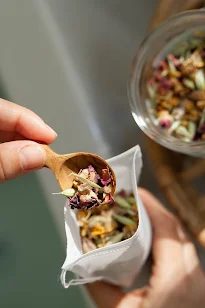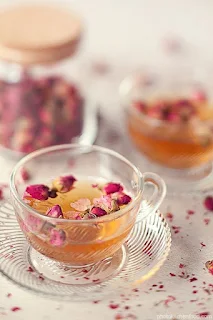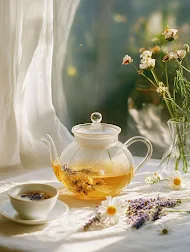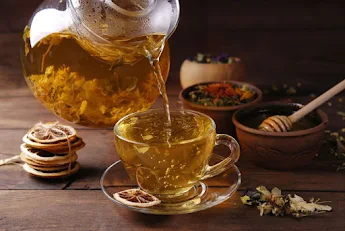From bitter memories to botanical bliss—herbal teas in India have come a long way. Once tucked away in nani’s kitchen for sick days, today’s kadha has transformed into a wellness essential. In this post, I explore how ancient remedies are being reborn as trendy infusions, complete with rose petals, blue pea flowers, and pastel packaging.


There was a time when the mere mention of kadha brought back memories of being sick, wrapped in a blanket, and being coaxed (or threatened) into sipping a concoction that smelled like a forest fire. Spices, tulsi, ginger, turmeric, pepper, and a few leaves whose names we never quite knew—all boiled into one bitter, pungent mix of “you’ll feel better tomorrow.”
Fast forward to 2025, and kadha—or let’s just call it what it is: herbal tea—is enjoying a serious glow-up.
Across urban cafes, wellness brands, and even international tea boutiques, herbal blends are being repackaged as elixirs of calm, beauty, and immunity. Think lavender-chamomile infusions, ashwagandha blends with dried rose petals, lemongrass and hibiscus tisanes in tall glass jars with pastel labels. They’re no longer just sick-day remedies; they’re your 8 PM wind-down drink, your skin’s best friend, or your morning detox fix.
🫖 The Science of Sip
What was once passed down through grandma’s recipes is now backed by Ayurveda, nutritionists, and lifestyle influencers. Turmeric lattes (hello, haldi doodh) are Instagram-famous, and even your neighborhood grocer probably stocks mint-infused green tea bags now.
Wellness-conscious consumers are leaning into functional beverages. Teas for better sleep. Teas for anxiety. Teas for digestion. It’s no longer about caffeine kicks—it’s about what your tea can do for you.
🌿 Blends with Benefits
Many Indian brands are embracing this herbal wave with flair. From startup herbal houses to legacy tea companies, there’s a new pride in local botanicals:
-
Tulsi is being paired with lemongrass or rose.
-
Giloy is sneaking its way into immune-boosting blends.
-
Blue Pea Flower is becoming a natural food dye and a stress reliever.
-
Moringa, once ignored, is now hailed as a superleaf.

And it’s not just about ingredients anymore—it’s about experience. Loose leaf teas with blooming flowers. Tea pyramids that open in hot water like origami. Tasting notes on packaging, from “earthy with a peppery finish” to “floral with citrus undertones.”
🌸 Kadha, But Make It Cute
Somewhere in this transition, the old kadha shed its medicinal seriousness and became... aspirational. Herbal teas are now part of a lifestyle: yoga mats, skincare routines, morning rituals. The bitterness has been toned down, the packaging made minimalist, and the storytelling refined for a younger, more aesthetically-driven audience.
But the roots remain. Every cup of these modern blends still carries the wisdom of generations. Your nani’s kadha might not have come in a resealable pouch, but it knew exactly what your body needed.
So next time you sip on a rose-lavender-turmeric tisane from a designer tin, just remember—you’re still drinking kadha. Only now, it’s had a spa day.



Comments
Post a Comment